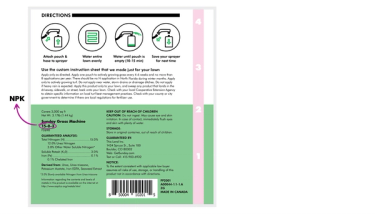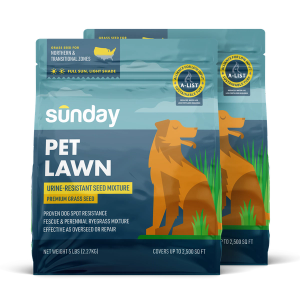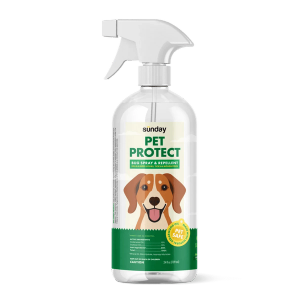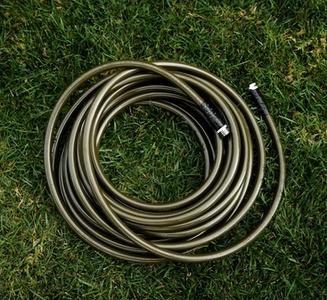What does NPK mean in lawn fertilizer?
NPK represents the three primary nutrients that make up 70% of your grass's mineral needs:
- Nitrogen (N): Drives growth and creates deep green color
- Phosphorus (P): Supports root development and nutrient absorption
- Potassium (K): Helps convert food to energy and strengthens grass blades
Why your grass needs these essential nutrients
Just like humans, grass plants need specific nutrients to thrive. While they get carbon, oxygen, and hydrogen from air and water, your soil provides most of the remaining 17 essential nutrients they need for healthy growth. Most lawns already have many of these nutrients naturally present in the soil, which is why excessive fertilization isn't necessary.
Sunday Tip:
Sunday developed a fertilizer program using MLSN, or minimal levels of sustainable nutrition, to ensure our fertilizers give your grass the proper levels of nutrients—and never too much
How to read NPK numbers on fertilizer
Fertilizers (lawn or garden) are regulated products that must show the minimum guaranteed analysis of these three major nutrients (N-P-K). On any lawn fertilizer package, you'll find three numbers that represent:
- N (Nitrogen): First number and the nutrient your grass needs the most to grow
- P (Phosphorus as phosphate/P2O5): Second number; most lawns need very little phosphorus, if any—unless it's a brand new lawn!
- K (Potassium as potash/K2O): Third number and a nutrient your lawn needs small amounts of throughout the season
These numbers indicate the percentage by weight of each nutrient in the product. For example, a 10-5-5 fertilizer contains 10% nitrogen, 5% phosphate, and 5% potash.

What fertilizer labels don't tell you
While NPK ratios are important, they don't reveal:
- The source of the nutrients
- What form the nutrients take
- Whether your lawn actually needs these amounts (most important!)
- How the nutrients will interact with your specific soil
This is why soil testing becomes crucial - it reveals what your lawn actually needs rather than just what's in the bag.
Sunday's free soil test and lawn analysis can start you on the right path to understanding your lawn needs.
The hidden cost of over-fertilizing
The impact of excessive fertilization on American lawns has reached concerning levels, with homeowners applying about 2.7 million tons of fertilizer annually at a cost of nearly $5 billion.
This over-fertilization creates serious problems:
- Weakens root systems
- Increases disease susceptibility
- Causes environmental runoff
- Wastes money on unnecessary products
In short, over-fertilization is causing significant impacts on lawn function and the environment.
Creating a sustainable fertilization approach
The key to responsible lawn care is working with nature, not against it.
With a Sunday lawn plan, you'll start with a comprehensive soil test to understand your lawn's unique needs. We interpret your test results using the Minimal Levels of Sustainable Nutrition (MLSN) method. This method helps determine exactly what supplementation your lawn requires—and reduces opportunity for excessive fertilization.
Then, we help you focus on these sustainable lawn practices:
- Regular soil testing every 3 years (or so)
- Minimal chemical intervention with pesticides—not all weeds are bad!
- Natural nutrient cycling, like mulching grass in the summer and mowing leaves in the fall.
- Building soil health over time by growing premium deep-rooting grass
Remember: A healthy lawn starts with understanding your soil. By providing only the nutrients your grass actually needs, you create a more resilient, sustainable landscape.
Let's get growing
Our turf experts created a smarter fertilizer program to help you use less fertilizer than the other guys—while still growing healthier, greener and more resilient grass.
Cited sources
Fertilizer Outlook 2010 - 2014. International Fertilizer Industry Association.
Global pattern of leaf litter nitrogen and phosphorus in woody plants. INRA, EDP Sciences.
Quick guide to fertilizing plants. UMN Extension.
Turfgrass Fertilization: A Basic Guide for Professional Turfgrass Managers. Penn State Extension.


















